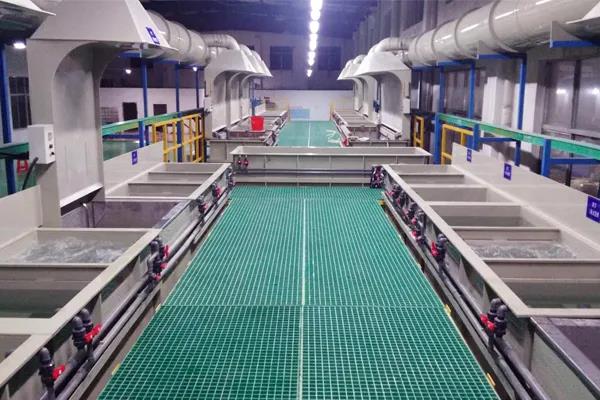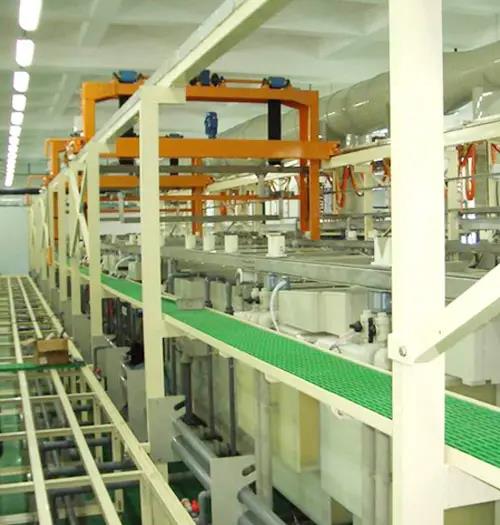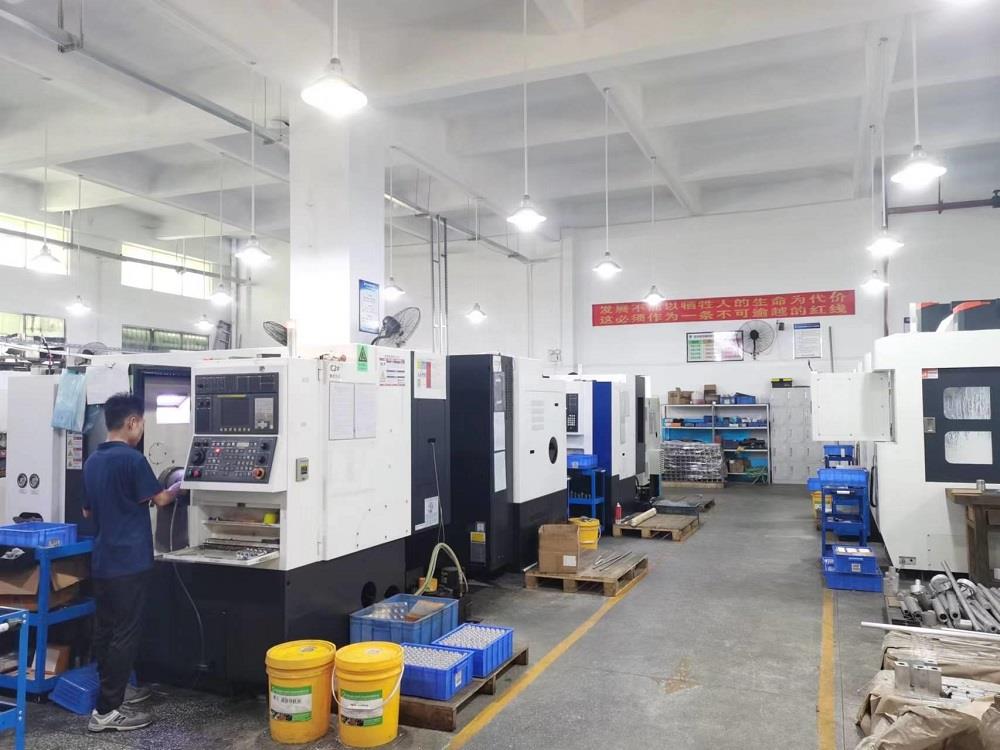What is Anodizing: Colors, Thickness and Reaction
 Jul 15,2022
Jul 15,2022

What is Anodizing
Anodic oxidation (anodize/anodization), electrochemical oxidation of metals or alloys. It is a process of forming a layer of oxide film in the aluminum products under the corresponding electrolyte and specific process conditions and the action of the applied current. Anodizing, if not specifically specified, usually refers to sulfuric acid anodizing. Anodizing is a process of surface finishing.
In order to overcome the defects of aluminum alloy surface hardness, wear resistance, etc., expand the scope of application, and extend the service life, surface treatment technology has become an indispensable part of the use of aluminum alloy, and anodizing technology is the most widely used and most successful.

How is anodizing done?
The so-called anodizing of aluminum is an electrolytic oxidation process in which the surface of aluminum and aluminum alloys is usually converted into a layer of oxide film, which has protective, decorative and some other functional properties. The anodizing of aluminum from this definition includes only part of the process of generating an anodized film.
The metal or alloy parts are used as an anodes, and the electrolysis method is used to form an oxide film on its surface. Metal oxide films change the surface state and properties, such as surface coloring, improving corrosion resistance, enhancing wear resistance and hardness, and protecting metal surfaces. For example, aluminum anodizing, aluminum and its alloys are placed in the corresponding electrolyte (such as sulfuric acid, chromic acid, oxalic acid, etc.) as an anode, under specific conditions and applied current, electrolytic.
The oxidation of aluminum or its alloy of the anode, a thin layer of alumina is formed on the surface, and its thickness is 5 to 30 microns while the hard anodized film can reach 25 to 150 microns. After anodizing, aluminum or its alloy improves its hardness and wear resistance, up to 250~ 500 kg / square millimeter, good heat resistance, hard anodized film melting point up to 2320K, excellent insulation, breakdown resistance up to 2000V, enhance corrosion resistance, in ω = 0.03NaCl salt spray after thousands of hours without corrosion.
The thin layer of oxide film has a large number of micropores, which can adsorb various lubricants, suitable for manufacturing engine cylinders or other wear-resistant parts; Membrane microporous adsorption capacity is strong can be colored into a variety of beautiful and colorful colors. Non-ferrous metals or their alloys (such as aluminum, magnesium and their alloys, etc.) can be anodized, this method is widely used in mechanical parts, aircraft and auto parts, precision instruments and radio equipment, daily necessities and architectural decoration and other aspects.
The thin layer of oxide film has a large number of micropores, which can adsorb various lubricants, suitable for manufacturing engine cylinders or other wear-resistant parts; Membrane microporous adsorption capacity is strong can be colored into a variety of beautiful and colorful colors. Non-ferrous metals or their alloys (such as aluminum, magnesium and their alloys, etc.) can be anodized, this method is widely used in mechanical parts, aircraft and auto parts, precision instruments and radio equipment, daily necessities and architectural decoration and other aspects.
Generally speaking, the anode is made of aluminum or aluminum alloy as the anode, and the cathode selects the lead plate, puts the aluminum and the lead plate together in an aqueous solution, which has sulfuric acid, oxalic acid, chromic acid, etc., and electrolyticizes it, so that the surface of the aluminum and lead plate forms an oxide film. Of these acids, the most widespread is anodic oxidation with sulfuric acid.

Anodizing function
Protective
Decorative
Insulation
Increases the adhesion to organic coatings
Increases the adhesion to the inorganic overlay
What are the advantages and disadvantages of anodising?
Advantages of Anodized Surface Finishing:
1. Strong texture: super strong metal texture: high-grade, beautiful and shining.
2. Low specific gravity: the specific gravity is only one third of that of stainless steel.
3. Scratch resistance: the surface hardness reaches sapphire level.
4. Strong anti-fouling: no fingerprints are left after touching.
5. Anti-static: anti-static does not vacuum and is easy to clean.
6. Good fire resistance: environmentally friendly, non-toxic, completely fireproof.
7. Anti-ultraviolet: good weather resistance, anti-ultraviolet.
8. Non-fading: the color is uniform and non-fading.
9. Strong hardness: suitable for special alloy products.
What are the disadvantages of anodising?
1. Black and white spots are easily formed on the part of the profile in contact with the cooling bed during the oxidation process.
2. The oxide film is easily mixed with impurities to turn yellow.
3. The materials are easy to stick together during the oxidation process, resulting in uneven color of the surface oxide film, resulting in a bad appearance.
4. The concentration of sulfuric acid during the oxidation process is not good, which will easily reduce the corrosion resistance of the surface of the profile.
5. If the profile falls off during the oxidation process, it is easy to cause a short circuit.
6. If the temperature of the electrolyte is too high or the electrolysis time is too long, it is easy to cause white opaque objects on the surface of the aluminum profile.
Why anodizing is done?
1. Anodizing can protect the aluminum profile substrate from corrosion, which is well-known to every household. For example, industrial aluminum profiles are treated with anodizing to prevent corrosion and be more beautiful.
2. The anodic oxide film can be used as a hard wear-resistant layer of the aluminum profile, and the hard oxidation of the aluminum profile can form a thick and hard oxide film layer on the surface of the aluminum alloy. It can be used as aluminum products under friction for a long time, such as automobile engine cylinders and pistons, which can greatly improve the wear resistance after hard oxidation.
3. As an electrical insulating layer, the aluminum alloy itself is conductive, but the aluminum oxide generated after anodization is insulating. It is very suitable for some occasions with high requirements on resistance, such as solar frame.
4. To protect decorative materials, aluminum profiles are chemically or electrochemically polished before anodization, and an oxide film with relatively high transparency can be obtained after anodization. If some organic or inorganic dyes are adsorbed before oxidative sealing, bright colors can be obtained. This colored oxide film is both a decorative layer and a protective layer.
5. As the bottom layer of electroplating, the anodized film has porosity. Anodizing treatment is performed before the surface electroplating treatment of aluminum profiles, which can improve the quality of electroplating.
6. As the bottom layer of painting, the aluminum profile should be oxidized before painting. Because the oxide film has a relatively strong adsorption capacity, the paint film and the oxide film can be firmly combined, and the corrosion resistance can be further improved.
What are the uses of anodizing?
(1) A new generation of information technology industry
The new generation of information technology industry relies heavily on integrated circuits and special electroplating equipment, information communication equipment, electronic computers and other basic equipment, and requires color anodizing technology to ensure the stability of the equipment. Among them, high-phosphorus electroless nickel plating is widely used in the electronics industry because of its corrosion resistance and wear resistance, stable non-magnetic properties, high resistivity and heat resistance.
(2) CNC machine tools and robots
At present, most CNC machine tools and robots are made of metal parts, which need to accept high-intensity repetitive movements and high-temperature and high-pressure working environments. Anodizing technology helps to improve their mechanical strength, ensure reliability and accuracy, and greatly increase their corrosion resistance, electrical conductivity, lubricity, heat resistance and surface aesthetics.
(3) Aerospace
The entire aerospace equipment industry chain is in the field of equipment and new materials, and the performance requirements of parts and components are relatively high. It is necessary to ensure that their performance stability, quality reliability, environmental adaptability, service life and other indicators meet the corresponding standards. For example, the system integrated chassis of the aircraft is made of special aviation metal materials, which is pressure and corrosion resistant. Needless to say, the lines and plugs embedded in it are all aviation-specific products to ensure that they are firm and cannot be loosened, let alone short-circuit.
(4) Offshore engineering equipment and high-tech ships
Seawater is a very corrosive medium in nature, especially with the development of economy, the pollution of offshore areas is increasing, which makes the seawater environment more complicated, and also makes the corrosion of metals in the seawater environment more prominent. Since marine engineering equipment and structural parts are used in harsh corrosive environments, their underwater structures have been eroded by seawater and microorganisms for a long time, so higher requirements are put forward for their corrosion resistance, which needs to be improved by anodizing technology. Its corrosion resistance.
(5) Advanced rail transit equipment
The high-speed railway tracks need to withstand the climatic tests, especially in the plateau area, and need to overcome the technical problems of plateau permafrost. Therefore, some metal surface treatment technologies need to be used on the railway tracks to withstand these tests. The performance of rails or high-speed trains can be greatly improved by metal surface treatment, such as anti-corrosion, anti-rust, anti-wear, electrical conductivity, lubricity, strength, heat resistance, weather resistance and other properties.
The difference between anodic oxidation and conductive oxidation
1) Anodizing is carried out in the case of high voltage electricity, which is an electrochemical reaction process; Conductive oxidation (also known as chemical oxidation) does not need to be energized, it only needs to be soaked in the potion, it is a pure chemical reaction.
2) Anodizing takes a long time, often tens of minutes, while conductive oxidation only takes a few tens of seconds.
3) The membrane generated by anodizing has several microns to dozens of microns, and is hard and wear-resistant; The film generated by conductive oxidation is only 0.01-0.15 microns, and the wear resistance is not very good, but it can both conduct electricity and resist atmospheric corrosion, which is its advantage.
4) The oxide film is originally non-conductive, but because the film generated by the conductive oxidation is really thin, it is conductive.

Capabilities of China top CNC machining manufacturers
Tuofa precision parts manufacturer was founded in 2006, with 50 kinds of metal surface finishing treatments, with tolerances as low as 0.01mm. From prototype parts to assembly into end-user products, we have completed industrial manufacturing services. We have passed AS9100D/ISO9001/IATF16949 quality management system certification
Tuofa provides employees with a friendly, cooperative, open and positive working environment, and is sure that all employees of Tuofa can work happily and with dignity.
For custom projects for customers, Tuofa strictly controls the quality in the production process, and provides multi category and small batch on-demand manufacturing services according to different needs. Tuofa CNC machining manufacturers have gained a good reputation in China and even the world, which is also the reason why 28% of the Fortune Global 500 enterprises have long-term cooperation with us.
 Tel/WeChat:
Tel/WeChat:  Email:
Email: 
 Home
Home
 What is CNC Skill? | Excellent Machinist
What is CNC Skill? | Excellent Machinist 







